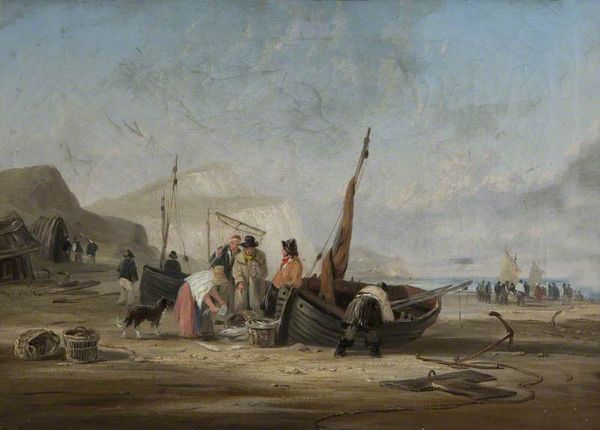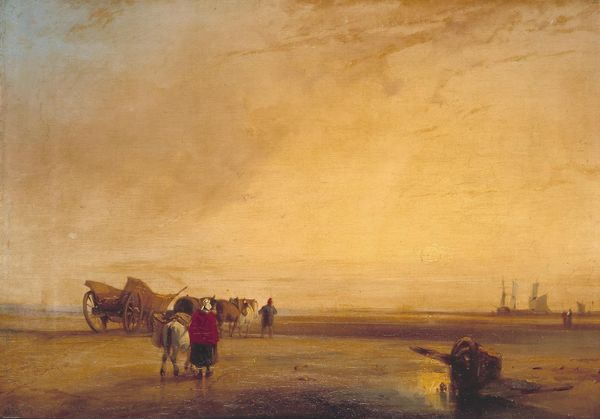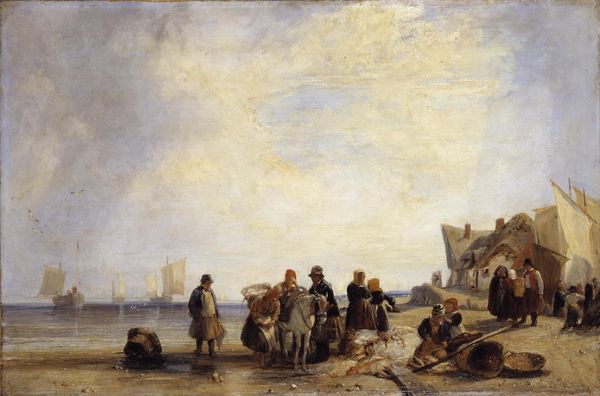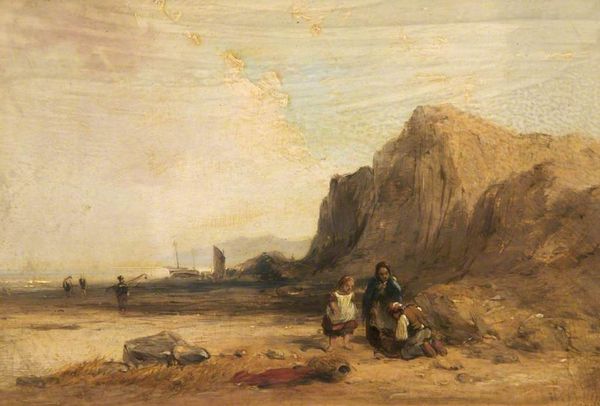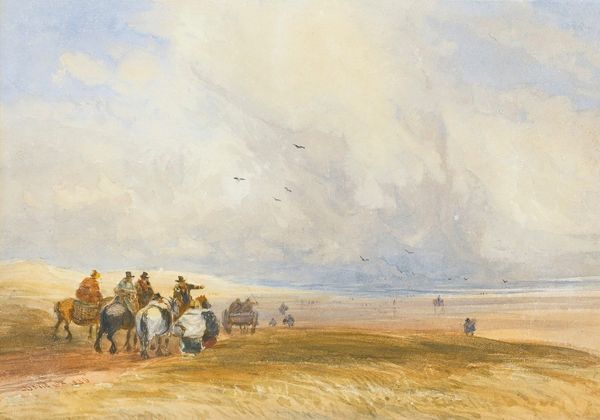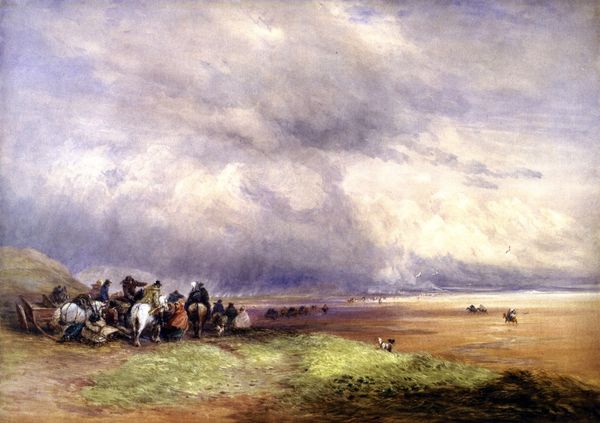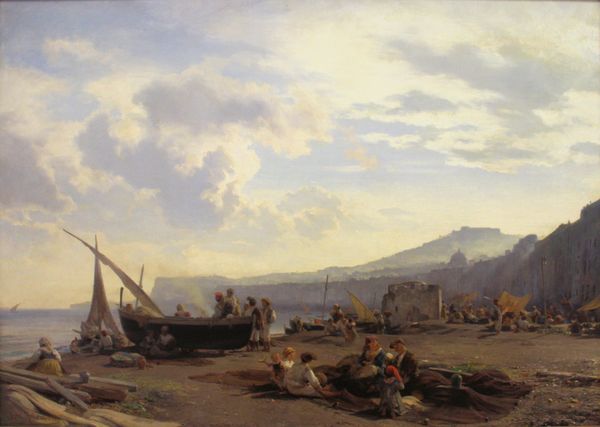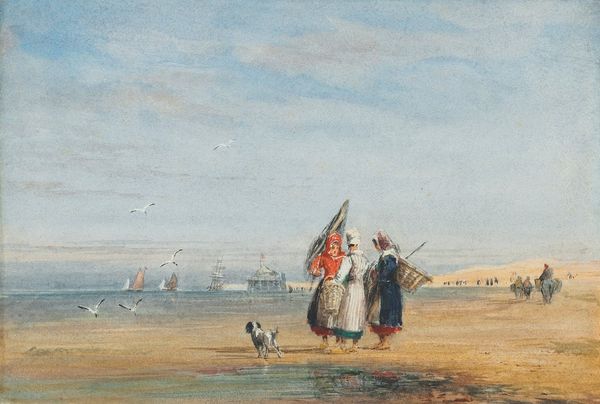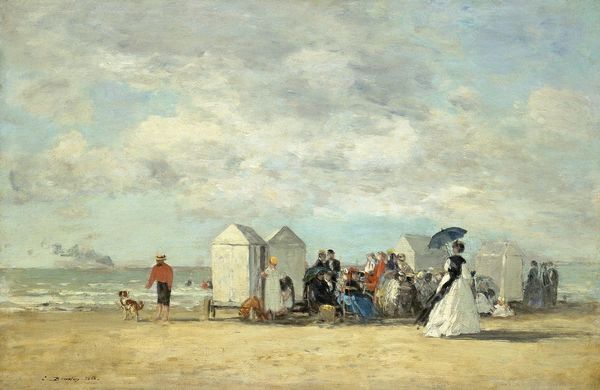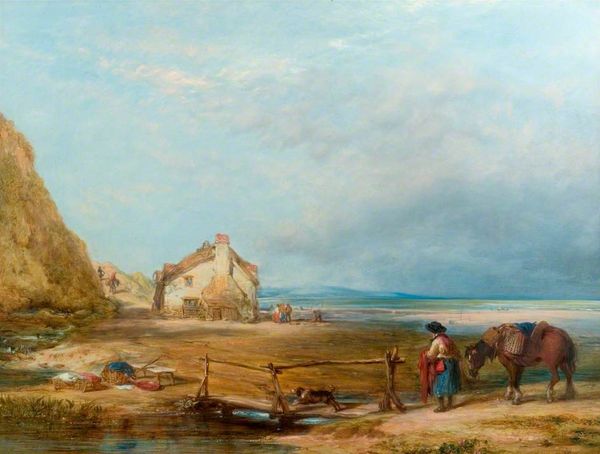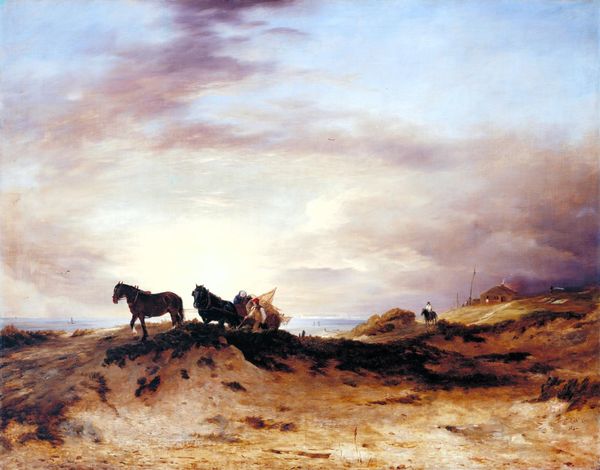
plein-air, oil-paint
#
narrative-art
#
plein-air
#
oil-paint
#
landscape
#
figuration
#
oil painting
#
romanticism
#
genre-painting
Copyright: Public domain
William Collins’ “Barmouth Sands” presents us with a slice of early 19th-century British life, painted with oils on canvas. It captures a moment of everyday activity on the Welsh coast, but what does it tell us about the social fabric of its time? The painting depicts various figures, each seemingly engaged in their own purpose, within a vast landscape. The social conditions of Collins' era, marked by burgeoning industrialization and urbanization, saw a nostalgic turn toward rural life. Artists like Collins found a ready market for idealized scenes of the countryside, often glossing over the harsh realities of rural poverty. Consider the figures: the man on horseback, perhaps a merchant or landowner, contrasted with the women carrying baskets, likely engaged in local trade. The military figure in the background reminds us of Britain's ongoing imperial projects, funded by the wealth generated through trade and industry. To understand “Barmouth Sands” fully, we would need to delve into the art market of the time, exploring the Royal Academy's role in shaping artistic taste and the patronage system that sustained artists like Collins. Through such research, the painting becomes more than just a pretty picture; it becomes a window into a complex social world.
Comments
No comments
Be the first to comment and join the conversation on the ultimate creative platform.
